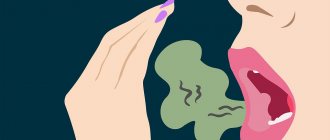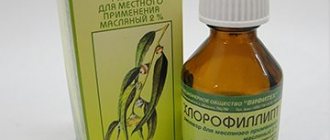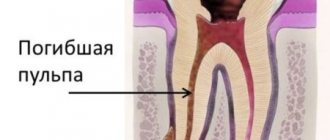Fans of hot red pepper should know that it burns not only in the mouth, but also on the skin - you can get burned while peeling and cutting the pods. Therefore, it is better to first read on sympaty.net how to remove the burning sensation from pepper on your hands, and only then start cooking.
The burning question is how to wash pepper off your hands,
you have to decide quickly. Answer: Apply a fat-containing or alcohol-containing liquid to your hands. In folk recipes, products that are probably available in the kitchen become life-saving: cucumbers, butter, milk, salt, etc.
What to do
The burning sensation caused by peppers is caused by a powerful, naturally occurring substance called capsaicin.
So, if you come into contact with hot peppers while cooking (or under other circumstances) and feel an unbearable burning sensation, you can do the following:
1. Salt. Take a few tablespoons of salt, add a spoonful of water, rub your hands with the resulting mixture, or completely immerse them in salt. Leave in this state for ten minutes, wash off with soap and water, and apply moisturizer.
2. Fresh cucumber. Ideally, you need to prepare a paste and put your hands in it. But if the burning sensation occurs in a small area, you can apply a slice of freshly cut cucumber to the affected area.
3. Ice. Helps reduce sensitivity for a while, for example, while you are looking for a cucumber or dissolving salt.
4. Milk. You need to keep your hands in milk for 10-15 minutes, then wash it off with soap and treat the skin with any moisturizer. If there is no milk, any fermented milk product will do: kefir, yogurt, yogurt, etc.
5. An alcoholic drink with a strength of at least 40 degrees. You need to dip your hand in alcohol and hold it there for seven minutes. Then rinse and lubricate with cream.
6. Raw potatoes. It must be turned into a paste, applied to your hands for 10-15 minutes, then washed off with warm water and soap.
7. Olive oil (sunflower oil will also work). Apply to hands, wait until the unpleasant symptoms subside, and wash off with warm water and soap.
8. Liquid soap and soda. These two components need to be ground to a paste, thoroughly rub your hands with it, and wait about a quarter of an hour. Please note: this mixture is washed off with vinegar, and only then with water.
9. Lemon juice, water and vinegar in a ratio of 1:1:1. Everything is combined and applied to the affected area.
10. Another great way to remove the burning sensation from pepper on your hands is salted milk. Dilute the salt with milk and dip your hands directly into the solution. Leave for 10-15 minutes, rinse, moisturize.
First aid at home
In folk medicine, there are several effective eye washes.
For an adult
The following options will help an adult:
- Tea brewing. You need to brew some black tea. Rinse the damaged organ with the prepared, slightly cooled solution. For greater effectiveness, you can apply moistened cotton pads to each eye for 3-5 minutes.
- Calendula . You should prepare a weak decoction of calendula. Rinse each eyelid in the same way as with tea leaves.
- Sterile water. You need to lower your face into warm purified water and blink a little.
- Potato. It is necessary to cut two round slices of raw potatoes and apply them to the sore eyes. This method relieves swelling.
- Goat milk. If you wash the damaged area with goat's milk, the signs of pepper will disappear fairly quickly.
Keep in mind! If pepper gets into your eyes, you should never rub them or touch them with your hands in any way.
To kid
The delicate body of a child requires delicate handling when such a problem arises.
To do this, you need to carefully rinse your baby’s eyes with one of the following solutions :
- brewing tea;
- infusion of chamomile or calendula;
- boiled water;
- sodium chloride 0.9 percent;
- Furacilin solution.
After washing the eyes, you need to give your baby eye drops with an anti-inflammatory effect.
After independently providing first aid to a child, even if everything is in order, the baby must be shown to a specialist.
This will help avoid serious consequences.
If your mouth burns
In addition, we will tell you what measures to take to relieve discomfort in the oral cavity.
Experts advise drinking one or two glasses of cold milk, dissolving the salt, slowly eating a spoonful of honey and drinking cold water; cold cream and yogurt can also perfectly stop the burning sensation (consume internally).
So that next time you don’t have to think about how to remove the burning sensation from pepper on your hands, use disposable latex gloves - this will protect you from burns.
Tags: , hands , pepper , , remove , burning , how
Symptoms of pepper getting into your eyes
It is worth noting! When an adult or child gets red or black pepper in their eyes, the problem is accompanied by the following symptoms:
- severe burning sensation;
- blurred vision;
- redness of the whites and area around the eyes;
- feeling of a veil in the eyes;
- increased tearfulness;
- unbearable pain;
- inflammation;
- itching;
- swelling.
In this case, ingestion of hot red pepper is accompanied by severe pain and burning sensation .
Causes
Physiological factors
Burning usually occurs in people with sensitive skin, even in the absence of a pathological factor. An unpleasant symptom is provoked by wearing itchy clothing or things made of synthetic materials. Women may experience a burning sensation on their face after applying skincare or decorative cosmetics, even if these products do not cause allergies. A typical cause of tingling and burning sensations on the skin of the legs is fatigue after a long walk.
Burns
Most often, symptoms are caused by exposure to high temperature or solar radiation. Any burn is accompanied by a severe burning sensation of the skin, which begins even during the action of the damaging factor and lasts from several days to several weeks. The skin appears pink or bright red in color; with deeper lesions, blisters filled with clear or cloudy contents form.
A burning sensation constantly bothers a person. The symptom becomes more noticeable when touching the affected area, applying medicinal ointments and sprays. The discomfort is greatly aggravated if the burn area comes under warm or hot water (for example, when swimming). As healing progresses, the burning sensation subsides and is replaced by periodic tingling and itching of the skin.
Chemical and electrical burns are characterized by deep penetration of the damaging agent - right up to the hypodermis, muscles and underlying tissues. With such injuries, burning fades into the background, since the main complaint is unbearable pain in the area of the destroyed epidermis and dermis. Burning sensations in the skin occur immediately at the moment of injury, when massive tissue destruction has not yet occurred.
Burning skin
Allergy
Skin hypersensitivity reaction is the second most common cause of burning skin. The symptom is determined in predisposed people upon contact with allergens: plant pollen, cosmetics, animal hair, food. Allergic burning is combined with urticaria, itchy skin rashes in the form of papules and vesicles. Watery eyes, sneezing, and discharge of clear mucus from the nose are often associated.
A burning sensation can be one of the components of seasonal allergies (hay fever). Sometimes this symptom becomes a harbinger of an attack of bronchial asthma: in this case, unpleasant manifestations are localized in a limited area and are accompanied by the presence of red spots on the skin. Often, burning sensations accompany pseudo-allergies when taking histamine liberators (chocolate, citrus fruits, strawberries).
Contact dermatitis
Burning skin is typical of the acute erythematous form of contact dermatitis, provoked by exposure to an irritant. The patient experiences painful and burning sensations, tingling, itching in the affected area. The skin takes on a bright red tint. In the bullous version of the disease, the burning sensation is complemented by the formation of blisters filled with clear liquid. Insignificant severity of the symptom occurs in the chronic form of dermatitis.
Psoriasis
Moderate itching and burning of the skin develops with the exudative form of the disease, which is manifested by the formation of scales and pronounced weeping. A burning sensation in the affected areas is disturbing during exacerbation of psoriasis. Symptoms intensify when scratching damaged skin or bathing. As a rule, the exudative process is detected in those suffering from endocrine pathologies (diabetes mellitus, hypothyroidism).
Herpes
Painful symptoms with apparently intact skin are characteristic of herpes zoster. Patients complain that the skin constantly burns, in order to reduce discomfort, they want to scratch it. Unpleasant sensations arise suddenly, last 12-24 hours, then specific vesicular rashes form at this site. In this case, severe burning pain persists until recovery, and can bother a person for a long time after the rash disappears.
With herpes simplex, the burning sensation of the skin is not so intense. Symptoms develop simultaneously with the appearance of vesicles filled with clear exudate. Patients note itching and an unpleasant tingling sensation in the affected area. The pain is moderate, unlike shingles. The burning stops when the rash heals and disappears.
Skin infections
Burning is one of the main symptoms of bacterial (impetigo, erysipelas), viral (molluscum contagiosum, HPV) or fungal (dermatophytosis, rubromycosis) skin lesions. Taking into account the etiology of the disease, burning sensations are accompanied by various local symptoms: vesicular and pustular rashes, peeling, lichenification.
Senestopathies
Pathology is observed in mental disorders: Kandinsky-Clerambault syndrome, hysterical neurosis, bipolar psychosis. Patients feel an intense burning sensation, sometimes feeling as if the whole body is “burning.” To cope with painful symptoms, the patient constantly scratches the skin and tries to apply ice. In some cases, the burning is so intense that the person rushes around the room, screaming or moaning.
Complications of pharmacotherapy
A burning sensation of the skin occurs with drug-induced dermatitis. Unpleasant symptoms develop both when drugs are applied externally (ointments, gels) and when drugs are administered orally or parenterally. Areas of rash or weeping form on the skin, which are accompanied by an unpleasant burning sensation. With each subsequent use of allergenic drugs, the affected area increases.
Rare causes
- Congenital diseases
: Hartnup disease, porphyria. - Connective tissue damage
: scleroderma, systemic lupus erythematosus, Shulman's disease. - Vascular disorders
: rosacea, rosacea, obliterating atherosclerosis. - Malignant neoplasms
: squamous cell skin cancer, basal cell carcinoma, melanoma.
How to protect yourself from burning
In cases where you are preparing a dish using hot peppers, you must prepare in advance and place next to you a container with water and bleach in proportions of 5:1. In this solution, when cutting peppers, you should periodically wet your hands and rinse them with water.
In addition, the safest method to protect yourself from getting burned is to use latex gloves or plastic bags while cooking. Or you can wet your hands with vegetable oil, which will neutralize the capsaicin.
Only in this way is there a high probability of avoiding burns on your hands and getting pepper juice on other parts of the body and in the eyes.
To avoid getting burned when working with pepper, you must use safety precautions. And if necessary, immediately use the above traditional remedies to eliminate the symptoms of burning and burns. If pain, discomfort, burning in the eyes and body persists after the procedures, you should definitely contact a medical specialist for specialized care.
The original article is posted here: https://welady.ru/10-sovetov-ubrat-zhzhenie-ostrogo-pertsa
Why does pepper burn?
Capsaicin is an oily substance found in some varieties of hot peppers; it is this component that gives dishes a special, specific taste. During cooking, pepper juice can get on the skin of your hands, thereby instantly causing a burning sensation and redness, which is very difficult to neutralize.
The amount of this component in all varieties of pepper is different. Thus, the more capsaicin, the stronger the burn from contact with the skin. Some of the most popular hot peppers are chili pepper, red hot pepper, and cayenne pepper.
Pepper heat units
Pepper heat units
Drug treatment of chemical injury
After first aid, if the symptoms do not subside, drug treatment is started. Solcoseryl gel and Pantoderm cream help relieve the burning sensation. The products are applied several times a day as needed. To prevent infection of damaged skin, it is lubricated with antibacterial ointment “Fastin”, “Spasatel”, “Levomekol”. Panthenol spray, ointment or cream helps well in regenerating the skin. Take an antihistamine tablet (for example, Tavegil).
Spray "Panthenol" will quickly remove itching and redness from a burn
In case of a severe burn, bandage the damaged surface and make sure that no irritating substances come into contact with the skin. Periodically, the wound is left open so that it heals faster.
You can only treat mild pepper burns at home at home. In case of severe damage, it is better to consult a doctor immediately after providing first aid. Otherwise, everything may end in the formation of ulcers, erosions or necrosis of the skin.
Remedy for burns - we act quickly and correctly
The most important structural component of cells is proteins. Their “representatives” collagen and keratin provide physical protection to the body by forming a structural framework that maintains the shape of cells. At temperatures above 44 degrees, proteins lose their three-dimensional shape and are destroyed. This leads to damage to cells and tissues, which occurs with any, even the mildest burn.
Depending on the depth of the injury, there are several degrees of severity of the burn.
First degree burns
the most innocent ones. With them, only the upper, keratinized layer of the epidermis is damaged. Manifested by redness, pain and slight swelling. After a few days, not a trace remains of them.
Second degree burns
characterized by damage to the epidermis to the deeper, germinal layer. Lymph and, less commonly, blood from destroyed cells penetrate upward, forming blisters. These burns heal after 1–3 weeks.
For third degree burns
not only all layers of the epidermis are affected, but also the underlying dermis, in severe cases down to the subcutaneous fatty tissue. The third degree is characterized by large blisters, which often open to reveal dense white or brown tissue.










